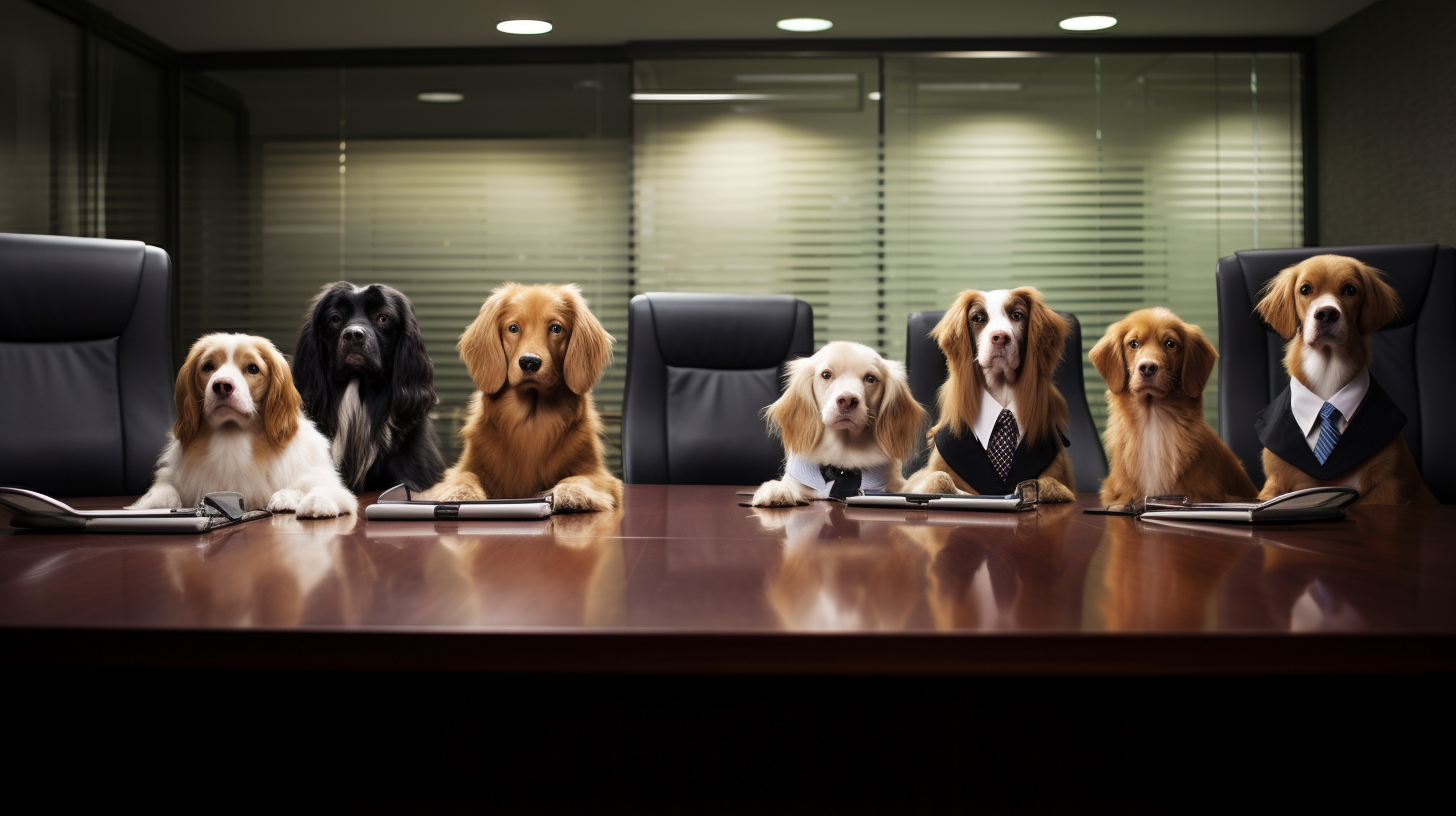The Canine Republic is witnessing a groundbreaking shift in its workforce demographics. A wave, or rather a wag, of excitement buzzes through the industry quarters as more diverse pawprints make their mark. We’re talking about the rise of furry professionals – and not just those with barks and howls. Whiskers in the workplace have become the latest trend as cats, once viewed as rivals, are now climbing the career ladders in sectors historically dominated by dogs.
It began subtly, with felines filling niche roles in vermin control and agility-based jobs, but today they have leapt into prominent positions. Spots & Stripes, a leading tech firm in the Republic, recently made headlines by appointing its first-ever feline CEO, Mr. Silas Tabbyton. As he eloquently put, “We’ve reached an era where skills and innovation trump species.” This statement reverberated through boardrooms and backyards alike, signaling a shift towards inclusivity in the dog-oriented economy.
In fashion, Claws Couture showcases their latest feline-inspired attire, while the revolutionary graphic design agency, Meowdia Studios, is renowned for its sharp visual instincts which offer a refreshing counterpoint to traditional canine creative approaches. It’s now not uncommon to find cats in hardhats at construction sites, or paw-deep in research at tech labs, working side-by-side with their canine colleagues.
Why the change, you may ponder? Experts point to the Bark & Whisker Accord, initiated after tense interspecies negotiations. The Accord resulted in revised Fair Work Acts, expanding employment opportunities and setting a harmonious tone. Additionally, the surging popularity of young, progressive politicians has disrupted the old guard’s views on workplace integration. Remember the influential movements from Sir Waggington and Youth Barkers we’ve reported on, trailblazing pups who’ve made space for this new cohort of working animals.
Yet, the furry integration is not without challenge. There’s a hiss in the midst of the wagging, as some traditionalist groups stand firm on their four paws, raising concerns about disrupted dynamics and alleged feline favoritism in workplaces. Debates get heated in the Barkliament, but policies evolve in response to public sentiment, which largely favors diversity.
For the paw-er worker, this means adapting to colleagues with a different purr-spective. Take the tech industry, where canine programmers are learning to collaborate with feline data analysts who favor pattern-detection and bring an unrivaled meticulousness to debugging. Emphasis on cross-species communication workshops is higher than ever, addressing everything from tail signals to ear flicks.
Felines also add value to the service industry. Ever visited The Purrfect Cup? This new chain of cafes is staffed mostly by cats, known for their calm demeanor and quick reflexes, serving up some of the finest blends in the Republic. Customer reviews have been glowing, citing the unique customer service experience as a welcome change.
Sports, while still predominantly a canine playground, now includes cat-centric games. The annual Fur-Ball Open has caught the attention of many, offering a spirited display of agility and strategy – qualities that both species excel at, albeit in different manners.
The workplace shift indicative of a broader societal transformation reflects the Canine Republic’s resilience and adaptability. As we engage with an increasingly inclusive economic narrative, we’re reminded that determination, creativity, and intellectual fervor aren’t confined to a single species. The integration of whiskered professionals is more than an economic trend; it’s a testament to the power of diversity. Perhaps Mr. Tabbyton best summarized it when he quipped, “Whether you bark, meow, or chirp – it’s the sharpness of the mind and the warmth of the heart that truly make the workplace shine.”
With this promising mosaic of diversity, surely, we’ll witness continued innovations and camaraderie in industries historically characterized by canine dominance.
